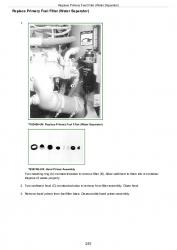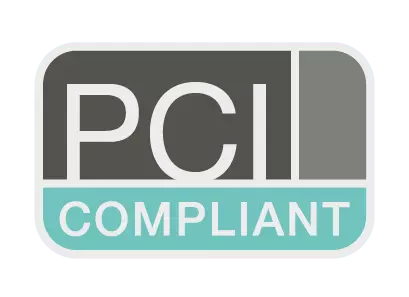John Deere 230LC excavator Operator's Manual (OMT184910)
Catalog:
Model:
Price: US$ 29.00
Complete Operator's Manual for John Deere 230LC excavator, with all the workshop information to maintain & operate like professional mechanics.
omt184910 - 230lc excavator Operator's Manual.pdf
omt184908 - John Deere Excavateur 230LC.pdf
omt184909 - John Deere 230LC Excavadora.pdf
Total Pages: 557 pages
File Format: PDF (Internal Links, Bookmarked, Table of Contents, Searchable, Printable, high quality)
Language: English Spanish French
omt184910 - 230lc excavator - Table of Contents
Introduction
HELP!! HELP!! HELP!! HELP!!
Section 05: Safety
John Deere Excavator Safety Features
Recognize Safety Information
Understand Signal Words
Follow Safety Instructions
Avoid Injury From: Loading Machine on a Trailer, fastening Machine to Trailer, Unloading Machine from Trailer ---------------------------------- Always Use Caution when Loading and Unloading Machines on a Trailer ---------------------------------- Always Know and Follow the Recommended Procedures for the Machine, Because all Machines are Not Loaded, fastened, and Unloaded the Same Way ---------------------------------- Always Keep Bystanders Clear of the Area
Avoid Injury from Backover Accidents ---------------------------------- Before Moving Machine, be Sure All Persons are Clear of Area ---------------------------------- Always be Alert for Bystanders Moving into the Work Area. Use Horn or Other Signal to Warn Bystanders Before Moving Machine ---------------------------------- When using a Signal Person, Keep Person in View at all Times, be sure Signal Person is Clear Before Backing Up
Avoid Injury from Rollaway Accidents -------------------------------- To Prevent Rollaway, Always Make Sure Machine is Properly Secured Before Leaving Operator's Seat -------------------------------- Death or Serious Injury may Result if You Attempt to Mount or Stop a Moving Machine
Inspect Machine
Use Handholds and Steps
Use Seat Belt
Maintain Seat Belt
Move and Operate Machine Safely
Operate Only from Operator's Seat
Secondary Exits
Operate Machine Safely
Dig with Caution
Operate with Caution
Avoid Tipping
Avoid Power Lines
Drive Machine Safely
Beware of Exhaust Fumes
Park Machine Safely
Keep Riders off Machine
Operate Attachment Safely
Handle Fluids Safely-Avoid Fires
Prepare for Emergencies
Handle Starting Fluid Safely
Clean Trash from Machine
Protect Against Flying Debris
Wear Protective Clothing
Protect Against Noise
Handle Chemical Products Safely
Warn Others of Service Work
Stay Clear of Moving Parts
Support Machine Properly
Service Cooling System Safely
Practice Safe Maintenance
Remove Paint Before Welding or Heating
Avoid Heating Near Pressurized Fluid Lines
Avoid High-Pressure Fluids
Prevent Battery Explosions
Clean the Machine Regularly
Store Attachments Safely
Dispose of Waste Properly
Section 06: Safety Signs
Safety Signs
Section 10: Operator's Station
Pedals, Levers, and Panels
Right Front Panel and Right Console Panel
Monitor Panel
Engine Coolant Temperature Gauge
Warm-up Indicator
Fuel Gauge
H/P (High Power) Mode Indicator
E (Economy) Mode Indicator
Auto-idle Indicator
Hydraulic Oil Level Indicator
Fuel Level Indicator
Air Filter Restriction Indicator
Engine Coolant Temperature Indicator
Charge Air Temperature Indicator
Engine Oil Pressure Indicator
Alternator Voltage Indicator
Engine Oil Level Indicator
Coolant Level Indicator
Switch Panel
Buzzer and Buzzer Stop Switch
Wiper Switch
Washer Switch
Operating Lights Switch
Cab Light
Key Switch
Engine RPM Dial
Power Boost Switch
Horn
Hour Meter
Heater
Control Panel Levers and Switches
Defroster Operation
Cab Heater and Air Conditioner-If Equipped
Control Panel Switches
Cab Heater Operation
Air Conditioner Operation
Defroster Operation
Front Console
Operating the AM/FM Radio
Setting the Clock
Cab Door Release Lever
Secondary Exit Tool
Opening Upper Front (Secondary Exit) Window
Closing Upper Front Window
Removing and Storing the Lower Front Window
Opening Side Windows
Opening and Closing the Roof Exit Cover
Adjusting the Seat
Adjusting the Armrest
Seat Belt
Operator's Manual Compartment
Section 15: Break-In
Engine Break-In Oil
Every 4 Hours
Every 10 Hours or Daily
After the First 50 Hours
After the First 100 Hours
Section 20: Pre-Start Inspection
Inspect Machine Daily Before Starting
Section 25: Operating the Engine
Check Instruments Before Starting
Level Check
Starting the Engine
Using Booster Batteries-24 Volt System
Check Instruments After Starting
Warming the Machine
Cold Weather Warm-Up
Stopping the Engine
Section 30: Driving the Machine
Steering the Machine Using Pedals
Steering the Machine Using Levers
Removing Propel Levers
Propel Speed Switch
Travel Alarm and Travel Alarm Cancel Switch
Parking the Machine
Parking Machine During Freezing Weather
Lock All Compartments
Section 35: Operating the Machine
ISO/SAE Excavator Control Pattern
Control Lever Pattern Conversion
Deere Backhoe Control Pattern
Pilot Control Shut-Off Lever
Auto-Idle Switch
Mode Selection Switch
Power Boost Switch
E (Economy) Mode
H/P (High Power) Mode
Standard Mode
Operating Tips
Driving Machine
Driving on Slopes
Driving Down a Slope
Driving Up a Slope
Driving Up a Steep or Slippery Slope-Boom on Uphill End of Machine
Driving Up a Steep or Slippery Slope-Boom on Downhill End of Machine
Moving Machine off an Embankment
Leveling Machine
Using Bucket
Planning Spoil Piles
Trenching
Backfilling
Truck Loading
Operating in Water and Mud
Clean Track Frame Area
Lifting
Hydraulic Breaker and Crusher Attachments
Lower Boom with Engine Stopped
Section 40: Transporting
Loading Machine on a Trailer
Fasten Machine to Trailer
Unloading Machine from Trailer
Towing Machine
Lifting the Machine
Section 45: Fuels and Lubricants
Diesel Fuel
Lubricity of Diesel Fuels
Low Sulfur Diesel Fuel Conditioner
Diesel Fuel Storage
Fuel Tank
Do Not Use Galvanized Containers
Diesel Engine Oil
Hydraulic Oil
Swing Gearbox, Propel Gearbox and Pump Gearbox Oils
Track Roller, Front Idler, and Carrier Roller Oil
Track Adjuster, Working Tool Pivot, Swing Bearing, and Swing Bearing Gear Grease
Oil Filters
Lubricant Storage
Alternative and Synthetic Lubricants
Mixing of Lubricants
Section 50: Periodic Maintenance
Service Your Machine at Specified Intervals
Check the Hour Meter Regularly
Use Correct Fuels and Lubricants
Prepare Machine for Maintenance
Open Access Doors for Service
Open Hood for Service
Maintenance and Repair Record Keeping System
OILSCAN Plus, OILSCAN Plus is a registered trademark of Deere & Company CoolScan Plus CoolScan Plus is a registered trademark of Deere & Company and 3-Way Coolant Test Kit
Maintenance and Repair Record Keeping System
Section 55: Maintenance-As Required
Clean Fuel Tank Inlet Screen
Drain Fuel Tank Sump
Clean Radiator Air Inlet Screens
Drain Water Separator
Clean Air Cleaner Dust Unloader Valve
Check Track Sag
Adjusting Track Sag
Windshield Washer Fluid Level
Section 60: Maintenance-Every 10 Hours or Daily
Check Engine Oil Level
Check Recovery Tank Coolant Level
Check Hydraulic Oil Level
Section 65: Maintenance-Every 50 Hours
Grease Working Tool Pivots
Section 75: Maintenance-Every 250 Hours
Check Swing Gearbox Oil Level
Drain Hydraulic Tank Sump
Check Pump Drive Gearbox Oil Level
Change Engine Oil and Replace Filter
Check Radiator Coolant Level
Check Battery Electrolyte Level and Terminals
Check Propel Gearbox Oil Level
Clean Dusty Primary Element
Inspect Element
Section 80: Maintenance-Every 500 Hours
Grease Swing Bearing
Grease Swing Bearing Gear
Replace Final Fuel Filter
Replace Primary Fuel Filter (Water Separator)
Check Air Intake Hoses
Replace Hydraulic Oil Filter
Check Coolant In Radiator
Section 85: Maintenance-Every 1000 Hours
Change Swing Gearbox Oil
Change Pilot Control Oil Filter
Change Pump Drive Gearbox Oil
Inspect Fan Belt
Change Air Cleaner Elements
Replace Air Cleaner Dust Valve
Section 86: Maintenance-Every 2000 Hours
Change Hydraulic Oil
Drain Cooling System
Diesel Engine Coolant
Cooling System Fill and Deaeration Procedure
Change Propel Gearbox Oil
Clean the Engine Crankcase Ventilation Tube
Check and Adjust Engine Valve Lash (Clearance)
Firing Order 6-Cylinder Engine:
Check Engine Speeds
Engine Speed Learning Procedure
Section 90: Maintenance
Do Not Service Injection Nozzles
Do Not Adjust Injection Pump
Bleeding the Fuel System
Precautions for Alternator and Regulator
Service Batteries Carefully
Checking Electrolyte Specific Gravity
Using Battery Charger
Replacing Batteries
Removing Batteries
Welding on Machine
Adding 12-Volt Accessories
Replacing Fuses
Fuse (Blade-Type) Color Codes
Checking Travel Alarm System
Replacing Bucket Teeth
Replacing Bucket Tooth Tip-Heavy-Duty Bucket
Adjusting Bucket Linkage
Removing the Bucket
Do Not Service Control Valves, Cylinders, Pumps or Motors
Track Sag General Information
Hardware Torque Specifications
Check Track Shoe Torque
Unified Inch Bolt and Cap Screw Torque Values
Metric Bolt and Cap Screw Torque Values
Additional Metric Cap Screw Torque Values
Check Oil Lines And Fittings
Service Recommendations for O-Ring Boss Fittings
Service Recommendations for Flat Face O-Ring Seal Fittings
Service Recommendations for 37° Flare and 30° Cone Seat Connectors
Service Recommendations For Flared Connections-Straight or Tapered Threads
Service Recommendations For Inch Series Four Bolt Flange Fittings
Service Recommendations for Metric Series Four Bolt Flange Fitting
Section 95: Operational Checkout
Operational Checkout
Section 100: Troubleshooting
Using Troubleshooting Charts
Engine
Electrical System
Hydraulic System
Section 105: Storage
Prepare Machine for Storage
Monthly Storage Procedure
Section 110: Machine Numbers
Record Product Identification Number (PIN)
Record Engine Serial Number
Record Propel Motor Serial Numbers
Record Swing Motor Serial Number
Record Hydraulic Pump Serial Number
Section 115: Specifications
230CLC
230CLC Working Ranges
230CLC Engine Specifications
230CLC Drain and Refill Capacities
230CLC Lift Capacity-KG (LB)
230CLC Lift Capacity-KG (LB)
230CLC Lift Capacity-KG (LB)
230CLC Lift Capacity-KG (LB)
230CLC Lift Capacity-KG (LB)
230CLC Lift Capacity-KG (LB)
Section 120: Crime Prevention Tips
Help Prevent Crime
Record Identification Numbers
Keep Proof of Ownership
Park Indoors Out of Sight
When Parking Outdoors
Reduce Vandalism
Report Thefts Immediately
Section CLIS: Checklists
Maintenance and Repair Record Keeping System
Section SLIT: John Deere Service Literature Available
Technical Information
John Deere 230LC excavator Operator's Manual (OMT184910)







